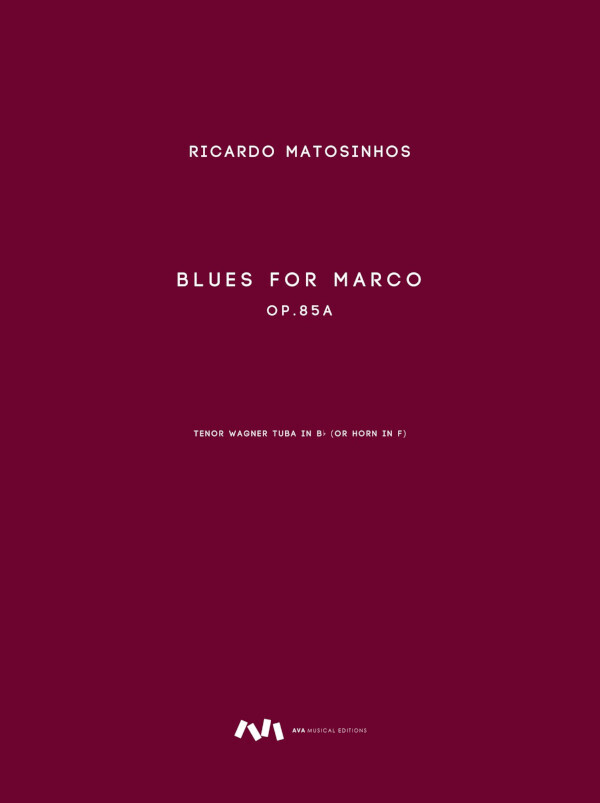 AvA Musical EditionsStil:
AvA Musical EditionsStil:  ModerneAusgabe: NotenArt-Nr.: A2827 / AVA232961 Level:
ModerneAusgabe: NotenArt-Nr.: A2827 / AVA232961 Level:
This piece was composed for Marco Peciarolo, the winner of the #MatosinhosChallenge organized in May 2020.
It was written for a Tenor Wagner Tuba in Bm, with an optional adaptation for a horn in F. These instruments
possess distinct characteristics, necessitating octave variations (ossias) for notes in the lower range of the horn,
that are possible to play on the horn, but more demanding than on a wagner tuba. Additionally, some vocal
parts involving multiphonics are optional, depending on the player's vocal range. If certain vocal elements do
not align with the player's vocal range, they can be adjusted or omitted. To maintain the blues atmosphere throughout the piece, the player can select specific notes to create different
effects. For instance, the sub-tone sound, a technique frequently employed in jazz, can be achieved by slightly
opening the lip aperture to produce an airy sound while maintaining the same pitch. Other techniques, such as
breath attacks, accents resulting from the abrupt opening of the embouchure, and falls, can also be utilized, with
a constant emphasis on musical expression.
In measure 10, the intention is to ornament using the overtones above while maintaining the same fingering
without focusing on the sound. Furthermore, to ensure a seamless performance consistent with the blues style
and to avoid disruptions caused by rapid finger movement, some fingering suggestions are provided. For
example, at the beginning of the piece, C#-D can be played using 2"3-3, and this fingering can also be applied to
the notes G#-A. Nevertheless, certain passages require specific fingerings for articulation effects, as evident in
measures 34-35 and 42.
It's important to take note of the varying note-head positions, indicating where the right hand should be
positioned while playing this piece on a Wagner Tuba, particularly during percussive effects. In the case of the
horn, as the bell tail is distant from the mouthpiece, players should use any tube of the instrument to produce
the rhythmic effect. Alternatively, finger snaps or other methods can be used. The primary objective is to engage
and involve the listeners, encouraging them to follow along. In measure 45, for horn players, it's more effective to
perform inside the horn bell.
Towards the end of the piece, a quote from R. Strauss with a blues sensation is included, followed by an
improvisation to be sung in any octave, using notes from the F blues scale. Have fun!





